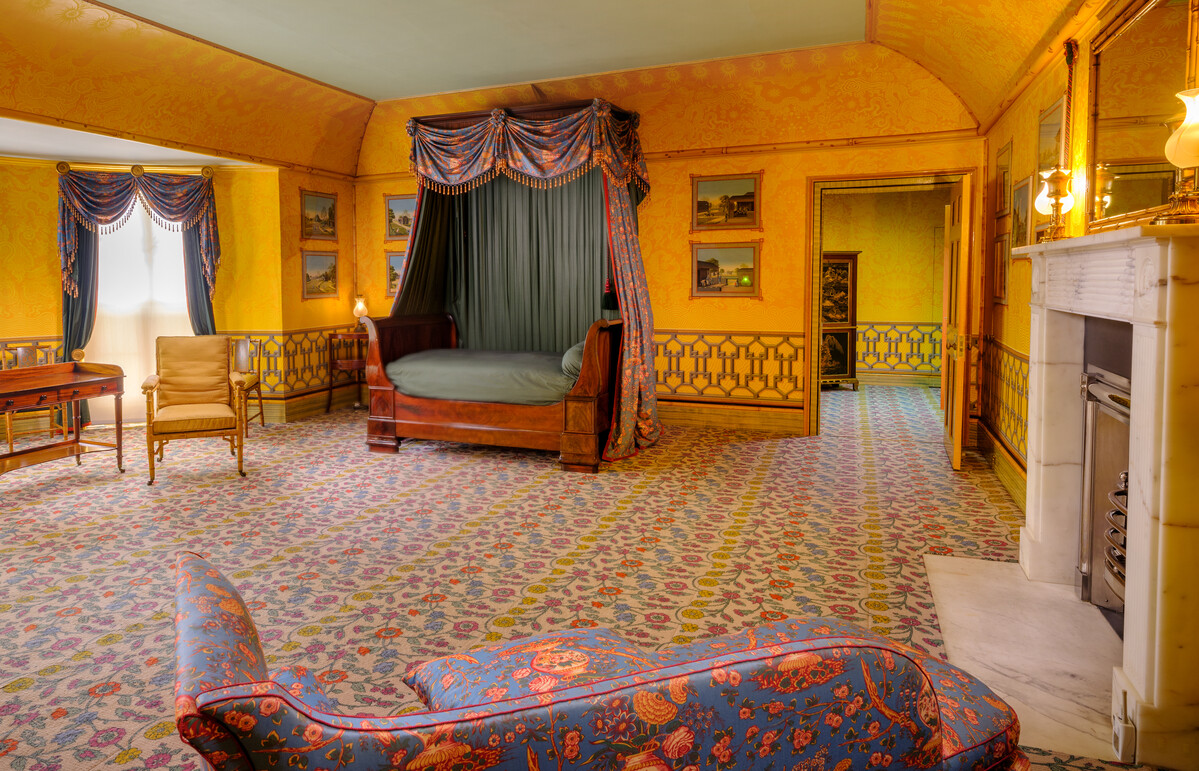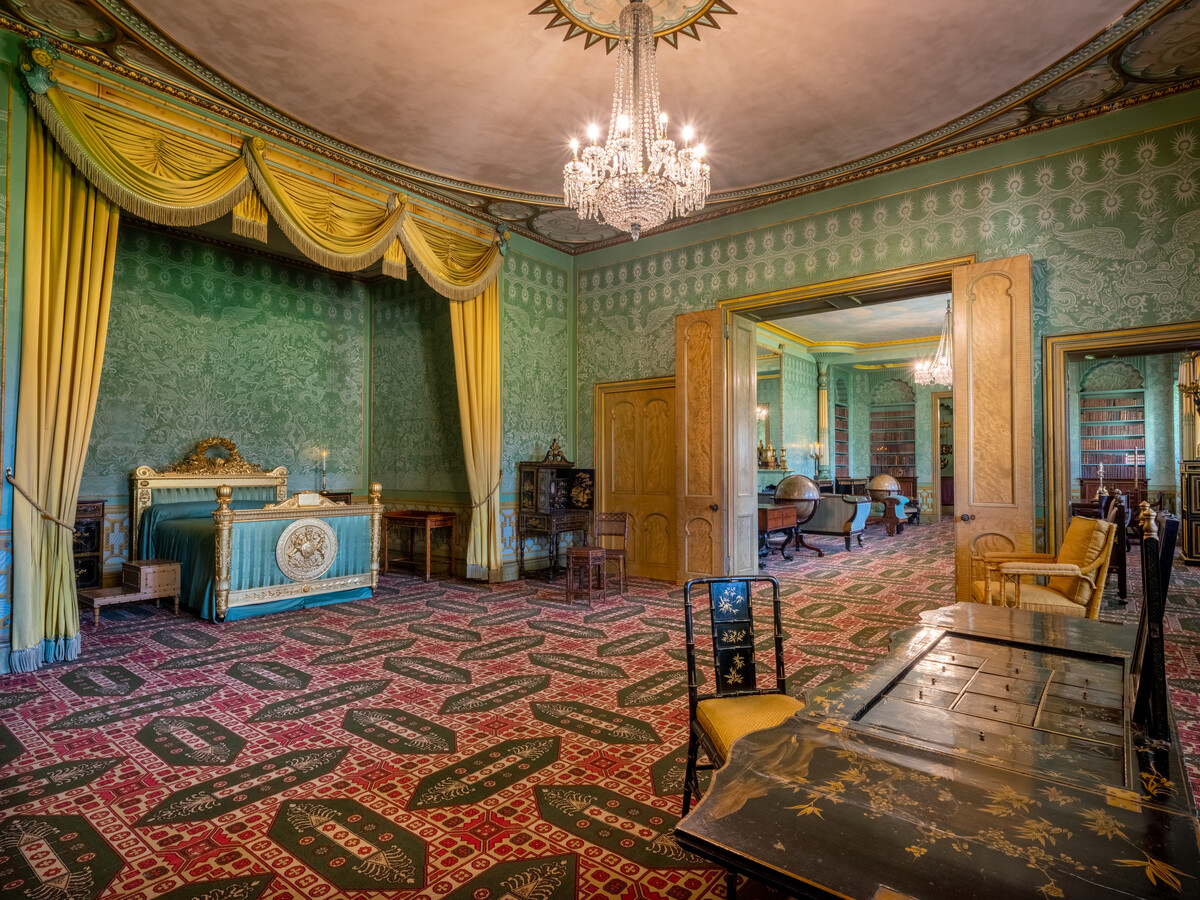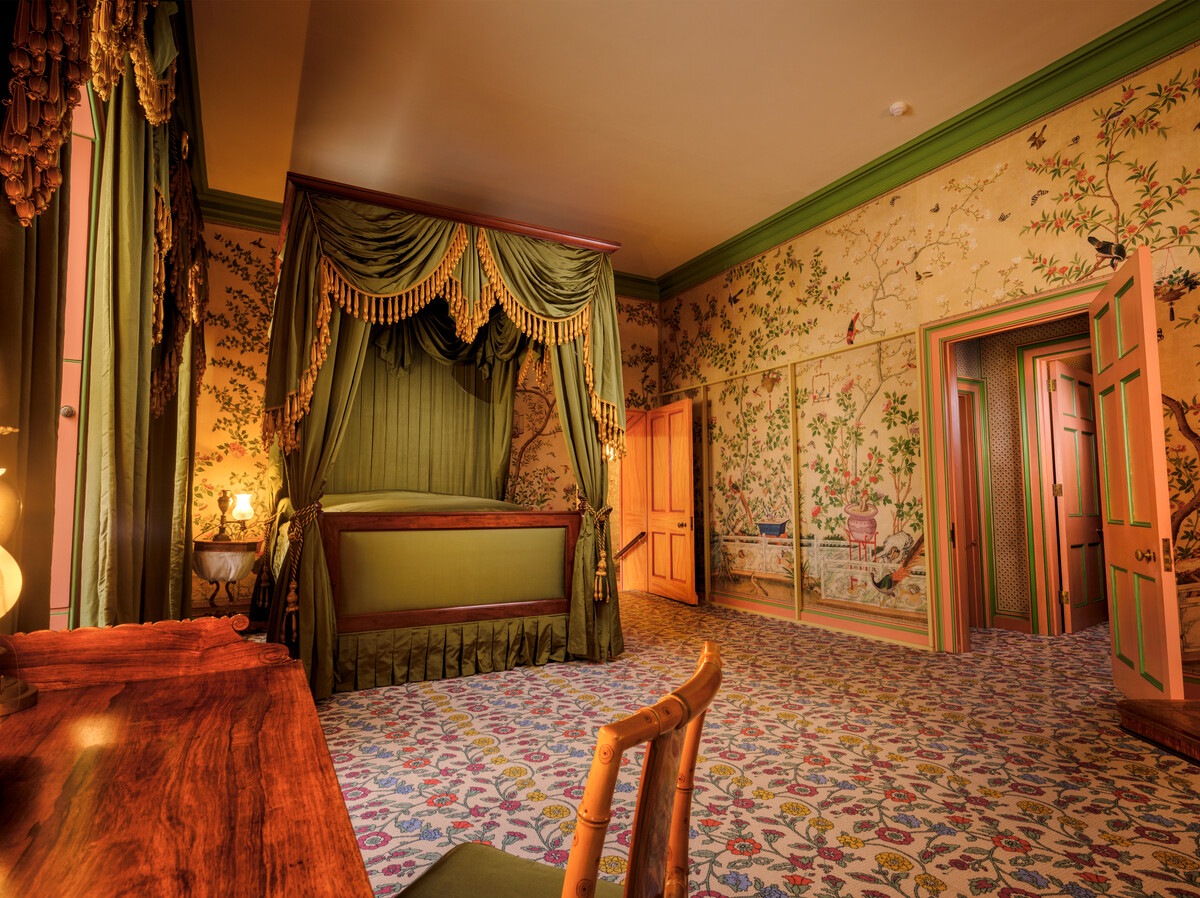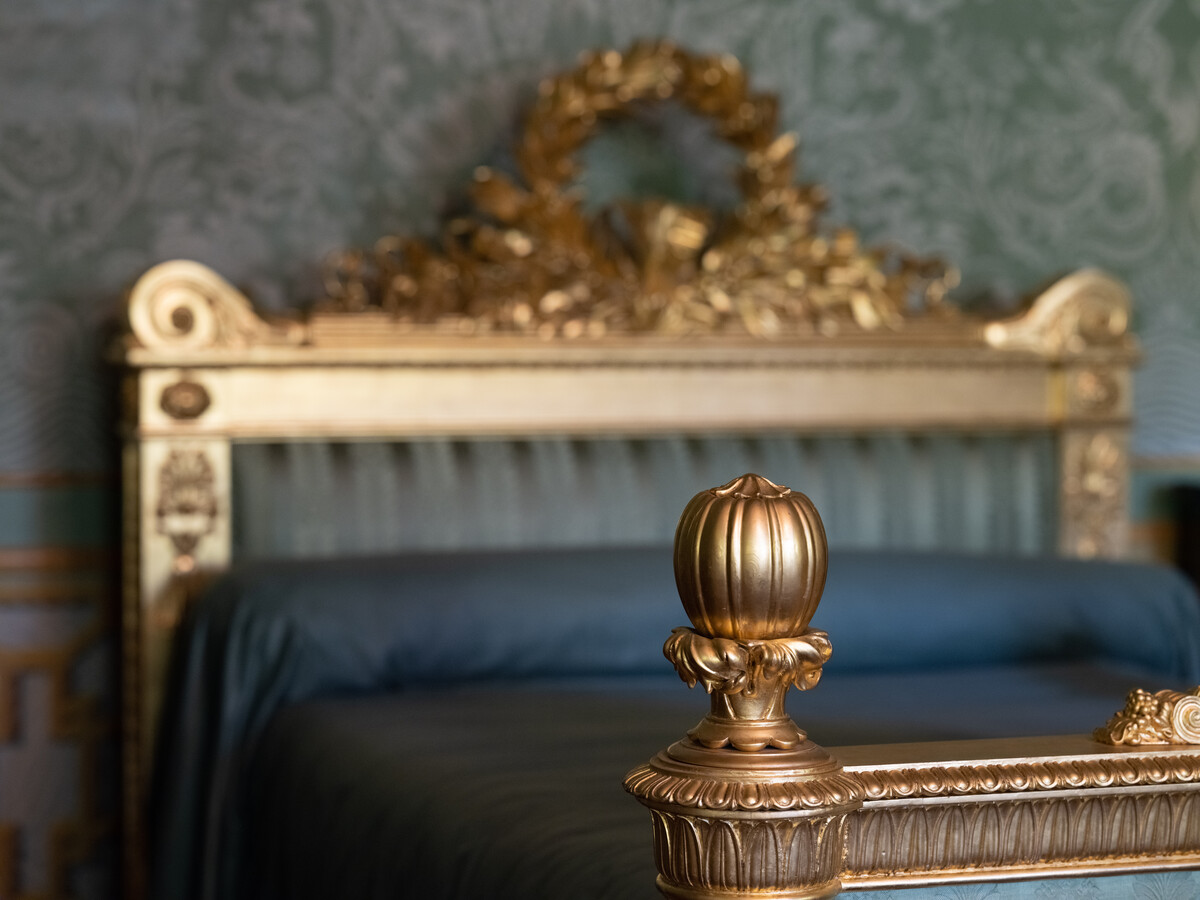
Royal Bedrooms
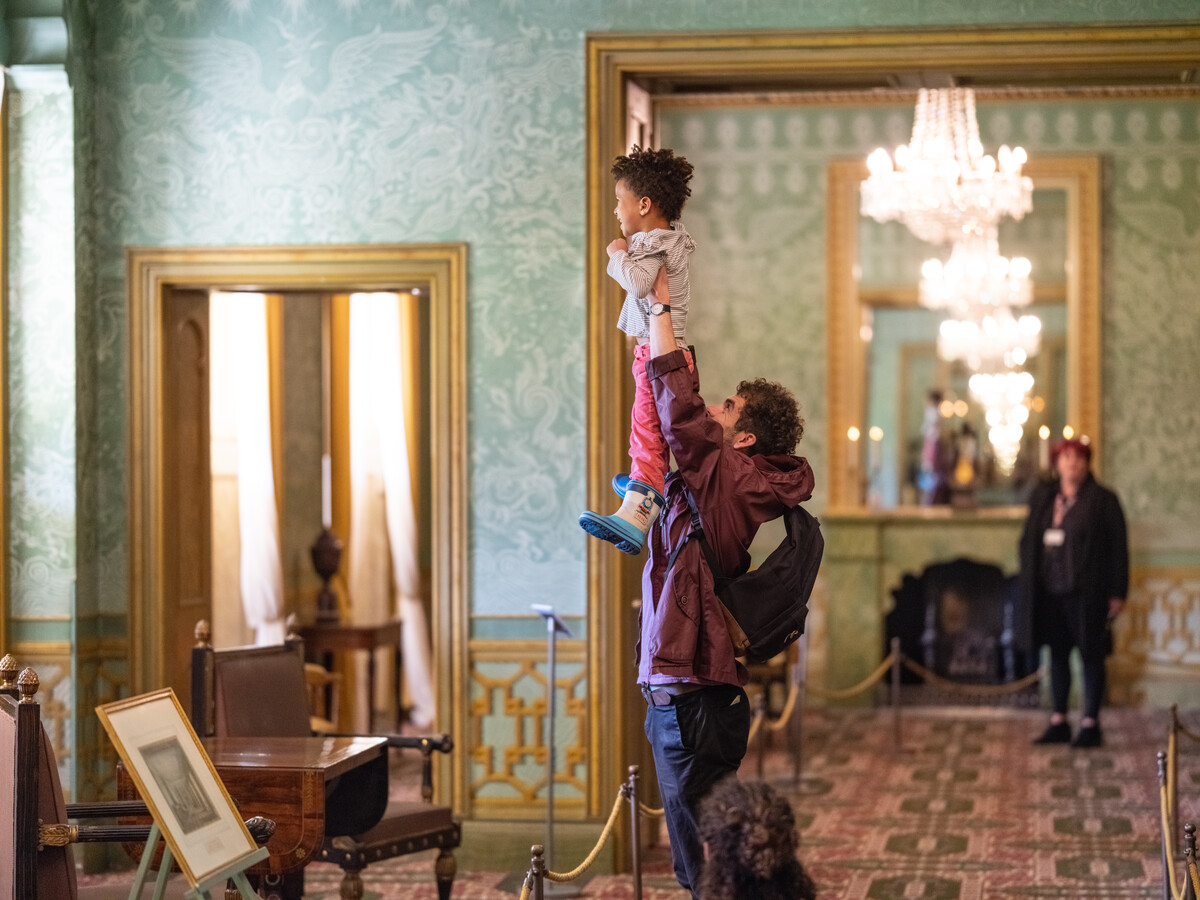
The Royal Bedrooms were designed for comfort rather than show. But fine craftsmanship and innovation are still evident, from hand-painted wallpaper and Chinese watercolours to a very modern pigment.
The King’s apartments, featuring a bedroom, bathroom and library, were moved to the ground floor during John Nash’s transformation of the Royal Pavilion. By the time they were complete, George was obese and his health was failing. Understandably, his private quarters were designed with comfort in mind. Less extravagant than the great state rooms, their colours are more subdued and their ceilings less lofty. There are, however, familiar international influences – Indian, Chinese, French – and some wonderful pieces of Regency furniture.

Dragons, birds and flowers
The bed was made in 1828 for George’s apartments at Windsor Castle. Lent by Her Majesty The Queen, it sits in a curtained alcove to reduce draughts. The walls are covered with a hand-painted copy of decorator Robert Jones’ original printed wallpaper. This was one of the King’s favourite designs, featuring dragons, birds and flowers in an intricate pattern.
Upstairs, the Yellow Bow Rooms were the bedrooms of George’s brothers, the Duke of York and the Duke of Clarence. Here, the walls are chrome yellow, a striking new colour in the 1820s, but one with many regal associations. In the North Bow Room, oil paintings capturing scenes of Chinese life hang on the walls, while clothes would have been stored flat in two early 19th century black lacquer boxes. The bed is placed against the wall, providing a sense of enclosure for its occupant.
On the walls of the South Bow Room, you’ll see a series of Chinese watercolours illustrating tea and cotton production. Other notable pieces include an English mahogany bed and a couch made for the Royal Pavilion in about 1815. Its legs, which retain their original paint, have been carved to imitate bamboo.
Queen Victoria’s bedroom
Queen Victoria visited the Pavilion on a number of occasions between 1837 and 1845. She found it an odd place and was disappointed that it offered only glimpses of the sea from some of its windows. She noted in her diary, however, that Prince Albert was ‘in great admiration of the Dining and Music Rooms, which are so splendid and richly done up and furnished.’
Her bedroom, a modest room above the entrance hall, has been restored so it closely resembles the interior she would have known. Like something out of a fairy tale, the mahogany four-poster bed has six mattresses – two of horsehair, two of straw and two of feathers.
The hand-painted wallpaper was recently returned to the Pavilion from Buckingham Palace. Following conservation and digital reproduction to replace missing sections, it now hangs in its original setting. With its jewel colours and exotic plants and birds, it must have transported the young queen to another world, far from the busy streets of Brighton.
